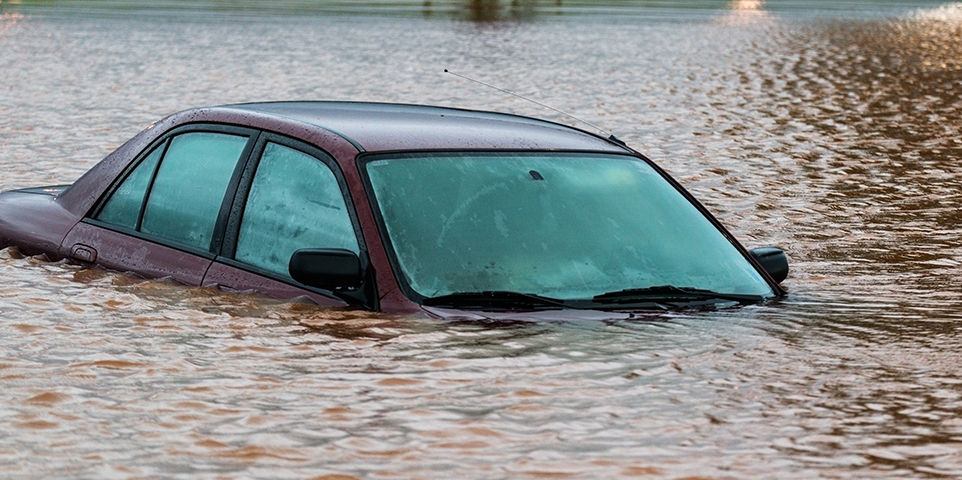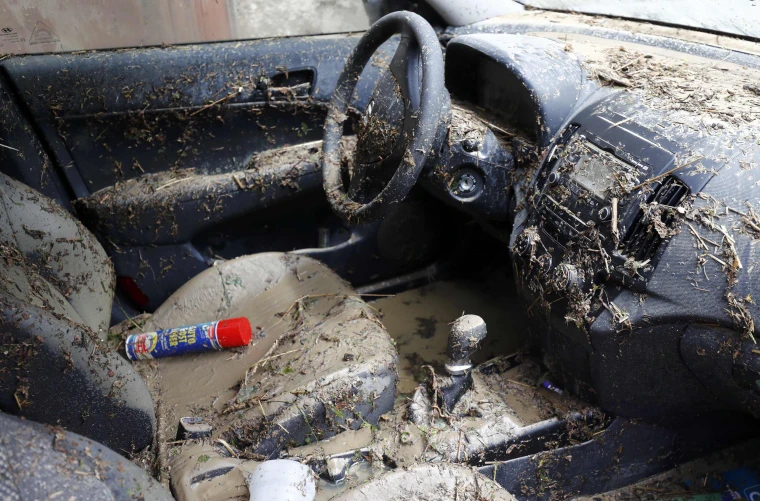Maintaining a flooded vehicle’s engine, transmission, and drivetrain is crucial to avoid expensive repairs. This article provides expert tips on how to properly care for these critical components after water damage. By following these guidelines, vehicle owners can minimize long-term damage and ensure their vehicle remains in good working condition, ultimately saving on repair costs.
Immediate Assessment and Safety Measures
The first step after a vehicle has been flooded is to conduct an immediate assessment and ensure all safety measures are in place. Begin by inspecting the exterior for visible signs of damage, such as waterlines, debris, or structural issues. It is crucial to avoid starting the vehicle, as water in the engine or electrical components can cause further damage. Disconnect the battery to prevent any electrical hazards and, if possible, use a winch or towing service to safely move the vehicle out of the water.
Once the vehicle is in a safe location, evaluate any immediate risks to health and safety. Floodwater can carry contaminants, so wear protective gear like gloves and masks when inspecting the vehicle. Check the cabin and trunk for standing water and remove it using a wet/dry vacuum or absorbent towels. Open all doors, windows, and the trunk to allow air circulation, helping to prevent mold and mildew from developing. By prioritizing these initial safety steps, you can mitigate further damage and prepare the vehicle for a more detailed inspection and repair.
Engine Evaluation and Cleaning
After addressing immediate safety concerns, the next step is to evaluate and clean the engine. This process is crucial to prevent long-term damage and ensure the vehicle remains operational. Here are the key steps involved:
- Check for Water Intrusion:
- Begin by inspecting the engine compartment for signs of water. Look for water in the intake manifold, air filter, and engine oil.
- Remove the dipstick and check for milky or frothy oil, indicating water contamination. If present, avoid starting the engine and proceed to drain and replace the oil and filter immediately.
- Remove and Inspect Components:
- Spark Plugs: Remove the spark plugs and inspect them for moisture or corrosion. If water is present, it could have entered the cylinders, which requires thorough cleaning.
- Air Filter: Remove the air filter and check for wetness or debris. Replace it with a new one if it has been compromised.
- Other Components: Inspect other components, such as the fuel system, belts, and hoses, for any signs of water exposure or damage.
- Cleaning and Drying:
- Draining Fluids: Drain all contaminated fluids, including engine oil, transmission fluid, and coolant. Replace them with fresh fluids as needed.
- Drying Out the Engine: Use a high-pressure air blower or compressed air to remove moisture from the engine compartment. Pay special attention to electrical connections and sensors.
- Cleaning Surfaces: Wipe down metal surfaces with a clean, dry cloth to prevent rust and corrosion. Use a suitable cleaner for electrical components if necessary.
By thoroughly evaluating and cleaning the engine, you can remove contaminants and minimize the risk of further damage. This step is vital for restoring the vehicle’s functionality and preventing costly repairs in the future.
Transmission Inspection and Servicing
Proper inspection and servicing of the transmission are crucial after a vehicle has been exposed to flooding, as water can severely damage this complex system. Here’s a detailed breakdown of the necessary steps:
- Check Transmission Fluid for Contamination:
- Inspect the Fluid: Begin by checking the transmission fluid dipstick. Look for signs of water contamination, such as a milky appearance or a foamy texture. If the fluid shows any indication of water, it must be addressed immediately.
- Fluid Consistency and Smell: Assess the fluid’s consistency and smell. A burnt odor or unusually thick consistency could indicate damage to the transmission’s internal components.
- Drain and Replace the Transmission Fluid:
- Drain the Fluid: If contamination is detected, drain the old transmission fluid completely. It is essential to remove all the contaminated fluid to prevent internal damage.
- Replace the Fluid and Filter: Replace the fluid with the manufacturer-recommended type and ensure the filter is changed. The filter may have trapped debris and water, so a new one will help maintain the transmission’s integrity.
By carefully inspecting and servicing the transmission, you can prevent significant mechanical failures and extend the lifespan of the vehicle. This thorough approach ensures that any water intrusion is fully addressed, protecting the transmission from further issues.
Drivetrain Examination
The drivetrain, encompassing components like the differential, driveshafts, and axles, is critical for transferring power from the engine to the wheels. After a vehicle has been submerged in water, it is essential to thoroughly examine these components for signs of damage or contamination. Start by inspecting the differential for water intrusion, which can lead to severe issues if not addressed. Water can mix with the gear oil, resulting in a milky appearance that indicates contamination. If water is detected, drain the differential fluid and replace it with fresh fluid to prevent corrosion and ensure smooth operation.
Next, assess the transfer case and driveshafts for potential water damage. The transfer case, crucial for vehicles with four-wheel drive, may also contain contaminated fluid if water has entered. Check the seals and gaskets for leaks, as water infiltration can compromise their integrity. Additionally, inspect the driveshafts and axles for any signs of rust or corrosion, especially at the joints and bearings. If these components show signs of damage or excessive wear, they may need to be replaced to maintain the vehicle’s performance and safety. A thorough examination and timely servicing of the drivetrain components can prevent costly repairs and ensure the vehicle remains reliable.
Electrical System Checks
| Component | Inspection Task | Potential Issues |
| Wiring | Check for corrosion and fraying | Short circuits, faulty connections |
| Connectors | Inspect for moisture and rust | Poor contact, signal loss |
| Sensors and ECU | Test functionality | Malfunctions, erratic behavior |
The electrical system of a vehicle is highly susceptible to water damage, making it essential to perform thorough checks after exposure to flooding. Begin by examining the wiring throughout the vehicle. Water can cause corrosion and fraying, potentially leading to short circuits or faulty connections. Inspect all visible wires, paying close attention to areas where water may have pooled. Additionally, check for any signs of water entry in the fuse box, as this can lead to electrical failures.
- Inspect Connectors and Terminals:
- Moisture and Corrosion: Examine all connectors and terminals for moisture and rust. These issues can result in poor electrical contact, leading to intermittent signal loss or complete failure of certain systems.
- Cleaning and Drying: Use a contact cleaner or electrical spray to clean and dry the connectors. Ensure that all connections are secure and free from oxidation.
- Check Sensors and Electronic Control Unit (ECU):
- Functionality Test: Test the functionality of critical sensors, such as those for the ABS, airbag, and engine management systems. Use a diagnostic tool to scan for any error codes that may indicate water-related issues.
- ECU Inspection: Inspect the ECU for any signs of water damage. The ECU is vital for vehicle operation, and any malfunction can cause erratic behavior. If water has reached the ECU, it may require professional repair or replacement.
- Interior Electronics and Accessories:
- Dashboard and Control Panels: Check the dashboard, control panels, and infotainment system for proper operation. Water damage can cause these systems to malfunction or display errors.
- Lights and Indicators: Verify that all lights, indicators, and switches are working correctly. Replace any bulbs or fuses that may have been affected by water.
By conducting these detailed electrical system checks, you can identify and address potential issues caused by water exposure. This proactive approach helps prevent further complications and ensures the vehicle’s safety and reliability.



